In the field of insulation, the simulation of sound transmission (or sound reduction) of multilayered acoustic structures (plane partitions i.e. flat walls and envelopes of aeraulic or pressurized fluids networks) is fundamental, since it is the basis of the design of construction systems opposing noise propagation, which is sought after in many contexts.
This is why the evaluation of sound transmission (or sound reduction) through multilayered acoustic structures is a fairly recurrent task for many insulation practitioners: its accomplishment under good conditions requires computation means that must be, all at the same time, versatile with regard to the configurations to be taken into account, sufficiently precise to base a performance commitment, and with conditions of use (e.g. user-friendliness, calculation time) which are not out of reach or out of step with the vicissitudes associated with daily work.
The acoustics calculation software SILDIS® allows the simulation of sound transmission (or sound reduction) of multi-layered acoustic partition walls and structures for the development of construction systems for insulation e.g. plane partitions (flat walls) and envelopes of aeraulic or pressurized fluids networks.
Simulation of sound transmission (or sound reduction) of acoustical plane partitions (i.e. flat walls)
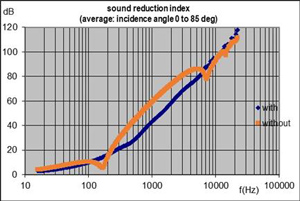
Fig. 1 Sound reduction index of a double wall, consisting of a steel plate (1 mm thick) and an aluminum plate (2 mm thick), with - this is then called corrugated sheet - or without corrugations, separated by a porous medium (e.g. wool, mineral or other) with a resistivity of 12.5 kNsm-4, porosity 0.95. For the frequency of 500 Hz, the sound reduction index reaches 27.5 dB with the corrugations, against 43.0 dB without the corrugations, what illustrates (if the frequency of 500 Hz is what one is focusing on), a considerable variation in performance..
With SILDIS® software, the simulation of sound transmission (or sound reduction) is possible for plane partitions (i.e. flat walls, including partitions whose geometry is with corrugations, provided that their amplitude is sufficiently low), whether they are simple (i.e. for 1 single plate or for 1 single set of joined but not glued plates) or multiple (e.g. with double or triple leaf) and it comes to the limitation of the transmission of sound power through a component of an enveloppe (standardized measurement according to standard NF EN ISO 140-3 Acoustics - Measurement of sound insulation in buildings and of building elements - Part 3: Laboratory measurements of airborne sound insulation of building elements).
The objective is often to obtain a high acoustic performance in a fairly wide frequency band (in the building sector: at least in the octave bands of central frequency 125 Hz to 4000 Hz), sometimes with components being light or/and of low thickness (however calculations with the SILDIS® software can also be carried out for thick walls e.g. plaster tiles, concrete), always guarding against the undesirable effects that constitute decreases (a fortiori: when they are significant) of the sound reduction index: at the critical frequencies of the plates (this is due to the phenomenon of coincidence, in relation to their rigidity) and, where appropriate, at the resonance frequencies (in the case of multiple walls e.g. double or triple leaf).
Figure 1 provides an example of simulation results in such a context with Module 2 of the SILDIS® software (in relation to the prediction of the acoustic performance of plane partitions).
Simulation of sound transmission (or sound reduction) of aeraulic or pressurized fluids networks acoustical envelopes
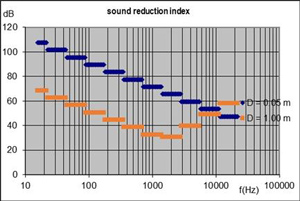
Fig. 2 Sound reduction index of an aluminum pipe, of circular cross section, with a diameter D = 0.05 m or D = 1.00 m (sufficiently far from a valve, with customary coupling between valve and pipe as practically encountered). For the frequency 500 Hz, the sound reduction index reaches 77.6 dB for a diameter D = 0.05 m against 38.6 dB for a diameter D = 1.00 m, what illustrates (if the frequency of 500 Hz is what one is focusing on), a very important difference in performance.
SILDIS® software allows calculations of sound transmission (or sound reduction) for many components of aeraulic or pressurized fluids networks, with or without heat insulation lagging, and it is a question of limiting the transmission of sound power: not in the flow direction (for what a silencer would be useful ), but transversely.
The objective is often to obtain a high acoustic performance in a fairly wide frequency band (in practice: in the octave bands of central frequency 125 Hz to 8000 Hz), for constructions (which cannot be assimilated to plane partitions), having a transverse section - of moderate characteristic dimension(s) - rectangular, square or circular (sometimes also: for spiral ducts), always guarding against the undesirable effects of decreases (a fortiori: when they are important) of the sound reduction index, in particular (in the case of circular ducts) at the circumferential expansion frequency (ring frequency) and, where appropriate, at resonance frequencies (in the case of multiple walls e.g. double shell partition).
Figure 2 provides an example of simulation results in such a context with Module 3 of the SILDIS® software (in relation to the prediction of the acoustic performance of duct walls).
Simulation of sound transmission (or sound reduction) of acoustical multilayered structures
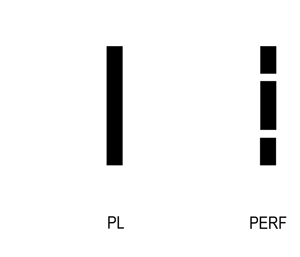
Fig. 3 Geometry of single-component plates taken into account with the SILDIS® software (from left to right): solid i.e. plane (PL) or perforated (PERF) plate
The simulation of sound transmission (or sound reduction) through multilayered structures with the SILDIS® software is notably based on the consideration of one (or more) plate(s) e.g. made of metal, wood, plaster, concrete [1] and, where appropriate (i.e. if it is not a single wall) of porous media (e.g. wool - mineral or other -, foams) [2], of surfacings [3], or of perforated protections [4].
With the SILDIS® software, as illustrated in figure 3, solid i.e. plane single-component plates (PL mark) or perforated (PERF mark) can be taken into account.
It is also possible to consider (as illustrated in figure 4) two-component plates made up of a base i.e. a support, often metallic (reference 2-PLY-1) and a damping material (reference 2-PLY-2) or else three-component plates made up of a base i.e. a support - metallic in the case of what is called a "sandwich sheet", glass when it comes to laminated glazing - (reference 3-PLY -1), a damping material (reference 3-PLY-2), and a constraining plate, often of the same nature as the base plate, although it may be of different thickness (reference 3-PLY-3).
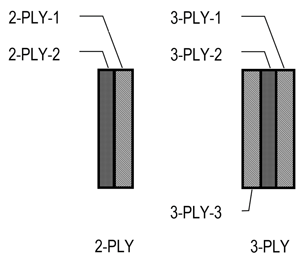
Fig. 4 Geometry of multi-ply plates taken into account with the SILDIS® software (from left to right): two-component (2-PLY) or three-component (3-PLY)
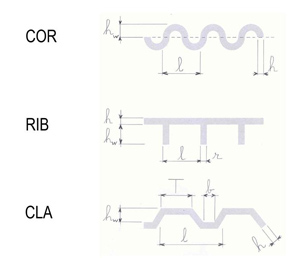
Fig. 5 Geometry of the corrugations of single-component (solid) plates taken into account with the SILDIS® software (from top to bottom): with sinusoidal undulations (COR), with ribs (RIB) or with trapezoidal profile (CLA)
Depending on the context, the damping viscoelastic material can be very varied e.g. EPDM, PVB ; for two-component or three-component plates, the characteristics of the equivalent plates thus formed [1] are calculated by the SILDIS® software (this is an intermediate evaluation step with a view to predicting the sound reduction index) from the input data relating to the different components [1] (taking into account the respective thicknesses).
With regard to single-component plates, simulations are possible not only for strictly plane partitions (i.e. flat walls), but also (as illustrated in figure 5) in the presence of sinusoidal undulations (COR mark), ribs (RIB mark) or trapezoidal profile corrugations (CLA mark).
For such orthotropic plates (i.e. whose properties in relation to elasticity differ depending on the dimension considered), the values of all kinds of stiffness (bending, torsion, in the different directions) are calculated by the SILDIS® software (this is an intermediate evaluation step with a view to predicting the sound reduction index) based on the characteristics of the material considered and taking into account the geometric parameters (as necessary: h, hw, l, r, T, b as shown in figure 5), unless the user knows them otherwise, what can then be directly used as input data for performance predictions in relation to limitation of the sound transmission (noise reduction).
Acoustic propagation is taken into account in the different layers, including (if applicable):
- interactions at the interface between porous (in relation to the effective density of the equivalent fluids, and subsequent changes in tortuosity)
- the connections between skins of a double wall (punctual or linear: with a simplified consideration)
Multilayer acoustic structures modeling for the evaluation of sound transmission (or sound reduction)
Regarding multilayer acoustic structures modeling for the evaluation of sound transmission (or sound reduction), it should be noted that with the SILDIS® software Module 2 (in relation to the prediction of the acoustic performance of plane partitions), the following can be taken into account, for multi-stage acoustic insulation devices (see figure 6 ):
- from 1 to 4 sets (numbered from 1 to 4 in figure 6) porous medium + surfacing + perforated protection + plate(s)
- 1 set of plate(s) (numbered 0 in figure 6)
- at the rear: the atmosphere
The calculation of the sound reduction index (illustrating the capacity of a structure to oppose the transmission of sound) is always carried out by considering sound transmission from upstream of the set of the highest index (to be taken into account, in a given context) towards the atmosphere (which constitutes the downstream).
With regard to Module 3 of the SILDIS® software (in relation to the prediction of the acoustic performance of duct walls) the calculations are carried out for 1 base layer i.e. a support - numbered 0 in figure 6 - considered alone or with a lagging, then made up of a porous medium and a cover plate (numbered C and F respectively in Figure 6), as in the case of a heat insulator.
Regarding the direction of sound transmission, the calculation of the sound reduction index can be carried out, on the one hand, as mentioned above for plane partitions i.e. flat walls (i.e. from the inside to the outside of a duct) and on the other hand, considering an opposite direction for sound transmission.
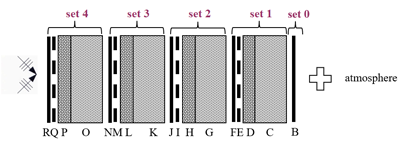
Fig. 6 Illustration of the possible combinations of layers with the SILDIS® software for the simulation of the sound attenuation of multilayer structures (plane partitions) for sound insulation (some layers can - if necessary: easily - be ignored, depending on the acoustic structure to be simulated). B, F, J, N, R: plates - C, G, K, O: porous medium - D, H, L, P: surfacing - E, I, M, Q: perforated protection
The possible combinations of layers are numerous and varied; each layer is fully configurable (the "atmosphere" layer also takes into account climatic conditions, i.e. the thermodynamic properties of the air): either by using library elements integrated into the SILDIS® software [5] or at user's initiative (BYO [6] concept).
The calculation capacities are thus very extensive, whatever the multi-layer acoustic structure considered in the context of an acoustic insulation project, allowing applications for the development of construction systems in the building sector as in industry (e.g. for reducing employee noise exposure or/and limiting acoustic nuisance in environment).
Applications related to the simulation of sound transmission (or sound reduction) of multilayer acoustic structures in the field of insulation
Regarding applications related to the simulation of sound transmission (or sound reduction) of multilayer acoustic structures in the field of insulation, it would be difficult to establish an exhaustive list of all the calculations that can be carried out with the SIDLIS software in this field, and of the subsequent applications, the available functionalities, in relation to acoustic comfort in the construction sector and in relation to industrial and environmental soundproofing, being very diversified:
- plane partitions i.e. flat walls (including those with moderate relief): for the facades and roofing of residential buildings, public-access buildings (PAB), offices and other work premises, industrial buildings, test benches (e.g. floors - even: when ribbed -, roofs, walls, claddings - including: with corrugations, what is important for their behaviour in terms of noise transmission -, glazing - even when laminated -), and also for doors, separating partitions (i.e. which divide the space: often with several subsets of adjoining sidings), as well as for linings (e.g. of masonry walls) or even for machine enclosures and soundproofing panels (often: metallic) used in industrial acoustics for soundproofed housings and buildings, bearing in mind acoustic screens (i.e. noise barriers)
- casing walls of aeraulic or pressurized fluids networks: for channels, ducts, pipes, canalizations of rectangular, square, or circular section (and even: for some spiral wound ducts) as used in the building sector and for numerous industrial installations (depending on the context, and subject to a moderate transverse dimension: ventilation networks, equipment for medium-capacity compressors, heat engines e.g. intake duct and air filtration stage, exhaust duct, industrial chimneys, but also the elements of fluid or steam transport networks, as well as the casing of all types of silencers)
It should be noted that in the case of aeraulic network envelopes with large-sized walls, e.g. for combustion turbines (in particular for the air intake duct - including the filtration stage -, the exhaust duct, the optional 3-way damper aka diverter), for industrial boilers (and for chimneys, silencers and other sound attenuators which relate to those noise sources or to other large ones), the calculations can be carried out - in the case of a rectangular or square cross section - considering plane partitions i.e. flat walls (i.e. with module 2 of the SILDIS® software).
It is possible, with Module 2 of the SILDIS® software (in relation to the prediction of the acoustic performance of plane partitions), to carry out, without limitation - of any kind - of input data, and for any frequency band of interest between 20 Hz and 20 KHz, prediction computations relating to very diverse construction systems for sound insulation, e.g. involving plates (either thin or thicker), associated with porous media, and possibly, with surfacings, and with perforated protections for obtaining performance indicators (with output data in 1/3 octave or 1/1 octave bands based on calculations performed for single frequencies) having to do with:
- transmission loss (of sound through walls): sound reduction index SRI - also referred to as sound transmission loss STL - (dB), in terms of weighted index Rw (dB) as well, and also (if it is not a single wall), for a base layer i.e. for a given support: insertion loss (illustrating the variation in performance linked to additional layers)
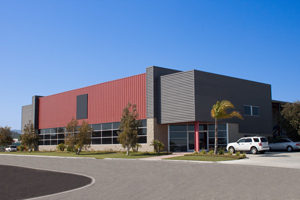
Fig. 7 Cladding, doors, glazing (but also: floors, roofs and partitions as well): so many dividing partitions i.e. flat walls whose sound reduction index can be calculated with the SILDIS® software in the building sector.

Fig. 8 Acoustic screens and noise barrier walls are multilayer acoustic structures whose acoustic performance can be assessed with the SILDIS® software.
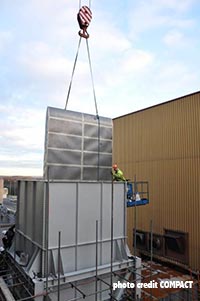
Fig. 9 High acoustic performance duct walls: gas turbine exhaust stack (under construction)
Many applications are thus possible, in relation to the computation of sound power emitted by multilayer structures, at ambient temperature, in the building sector (see figure 7) or in the context of environmental protection projects against noise (see figure 8).
The thermodynamic conditions (which cause the characteristics of the fluid to vary - which can be air or another gas: O2, N2, steam, exhaust gas -) and therefore, where applicable, those of the elements of absorbent filling and lining are taken into account for the simulations with the SILDIS® software (in particular: calculations are possible at Ultra High Temperature), which allows many applications in the industrial sector (see figure 9).
About multilayer acoustic structures performance prediction in terms of sound transmission (or sound reduction) with SILDIS® software
Multilayer acoustic structures performance prediction in terms of sound transmission (or sound reduction) with SILDIS® software can be carried out in the context of an acoustics design office tasks or of Research & Development works aimed at the development of sound insulation products, in a context of optimizing performance and limiting production costs.
The conditions for acquiring, learning and using the software (in Excel format) are in no way prohibitive with regard to episodic use, the availability of the tool (which can be used even by a non-hyper-specialized workforce) being - for the beneficiaries - total ; the calculation times are in no way prohibitive with respect to use in a context requiring the rapid obtaining of output data.
With regard to laboratory performance tests according to the standards mentioned above, acoustic performance forecasts with SILDIS® software can sometimes (depending on the context):
- allow optimization of their preparation by limiting the number of tested configurations
- complement them by extending the evaluation domain of indicators (e.g. for other combinations of parameters, in lower frequency or higher frequency)
- replace them for various reasons, e.g. organizational, or financial (then: sometimes providing flexibility in the choice of what the performance evaluation relates to)
- allow to obtain what laboratory tests do not always allow to obtain e.g. high temperature performance evaluations
The simulation of sound transmission (or sound reduction) through multilayer acoustic structures (plane partitions and envelopes of aeraulic or pressurized fluids networks) with the SILDIS® software can be carried out either by the human resource of ITS (which developed and which markets this means of calculation: software publishing is an activity of ITS assessed in accordance with the requirements of the ISO 9001 standard), or in self-service (with subscription) in ASP mode [7] (English acronym which can be translated by Provision of a Hosted Application).
[1] characteristics taken into account: Young's Modulus, density, Poisson's factor, loss coefficient, installation conditions (free or clamped), dimensions
[2] characteristics taken into account: resistivity, porosity, tortuosity, thermal characteristic length, viscous characteristic length, density, thickness
[3] characteristics taken into account: resistance to air flow, mass density, thickness
[4] characteristics taken into account: porosity, geometry of the perforations, mass density, thickness
[5] the specific characteristics of materials to be taken into account for the calculations - in addition to the thickness and number of layers, as well as their stacking order- are tabulated
[6] BYO = Bring Your Own (anglo-australian acronym)
[7] ASP = Application Service Provider from 250 €/month i.e. 277.50 US $/month ; the fixed price is that indicated in € (the price expressed in US $ is valid, as on December 5, 2019, when 1 € = 1.11 US $) ; VAT with a rate of 20% extra (if applicable, i.e. only for customers established in France) ; commissioning extra